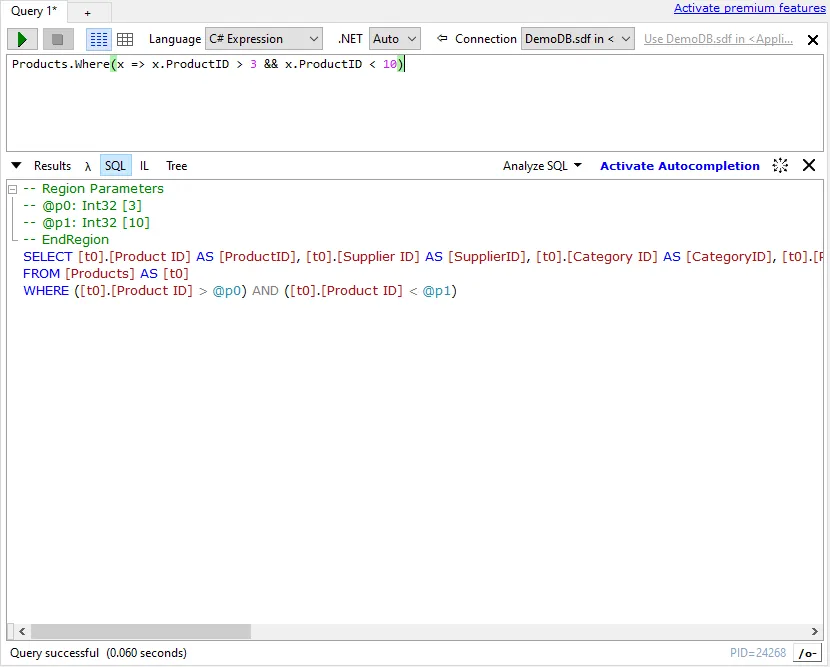我有一个查询,格式如下:
bool filterQuotes = false;
bool filterInactive = false;
var res = await DbContext.CheckPlans
.Where(plan => plan.PlanID == currentPlanId)
.SelectMany(plan => plan.CheckActivityPlanDetail)
.Include(planDetail => planDetail.CheckActivity)
.ThenInclude(checkActivity => checkActivity.Setup)
.Where(planDetail => (!filterQuotes || planDetail.CheckActivity.ActivityType==0)
&& (!filterInactive || planDetail.IsActive))
.OrderBy(planDetail => planDetail.CheckActivity.Setup.Value)
.ToListAsync();
如何将此查询转换为普通的 SQL Server 查询以查看其输出?
